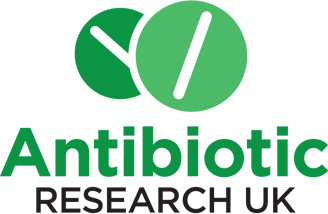Antibiotics and resistance in the environment
Both antibiotics and antibiotic-resistant bacteria are present in the environment due to human activities. Antibiotic resistance in the environment spreads existing resistant organisms. This contamination can cause further development of resistance.
These drugs and bacteria are often found in the waterways and soil. We know little about the scale of the risk they pose or their modes of transmission. In January 2019, a research team reported the presence of antibiotic resistance in the environment in soil samples in the high Arctic.

Sources of environmental antibiotic resistance
Human and animal waste
This can contain antibiotics that the person or animal has been treated with, or antibiotic-resistant bacteria.
Pharmaceutical waste
Active ingredients can release into the environment as part of the waste from the production of antibiotic treatments.
Pesticides for crop plants
Antibiotics are sometimes used to treat and prevent crop-plant diseases. Transport of plants and water run-off into the local waterways can both lead to contamination.
Resistance as a survival advantage
Bacteria that are resistant to antibiotics are more likely to survive and reproduce, passing on their genes for resistance. This is particularly true in an environment contaminated with antibiotics, as non-resistant bacteria that would otherwise compete for resources are killed. This creates a better environment for the antibiotic-resistant bacteria.
Antibiotic-resistant bacteria in water
We believe that bodies of water could harbour ‘reservoirs’ of resistant bacteria. It provides the perfect environment for them to multiply within. Exposure to the water, for example through swimming, surfing or working within the water, could lead to infection with these harmful organisms.
Antibiotics are also added to bodies of water used for fish farms, even within natural areas like lakes where the treatment can easily escape into the surrounding waters.
The resistant bacteria could also spread the genes for resistance to other bacteria within the waterways, leading to new strains of environmental antibiotic resistance.

Antibiotic-resistant bacteria in soil
Antibiotics and resistant bacteria are often present in manure that is used to fertilise fields. They can also be present in the bodies of water used to provide irrigation for crop plants. The addition of antibiotics in pesticides also contributes to this problem.
Global challenges
Adequate sanitation and hygienic processing of human waste are important for reducing the risk of contamination and human exposure to resistant bacteria. Many countries face challenges in this area due to a number of factors, such as having poor infrastructure or a hot climate.
Hospitals are a particular risk to their local environment as patients are often prescribed antibiotics and are also more likely to have an antibiotic-resistant infection. This means that the human waste from hospitals is more likely to contain antibiotics and resistant bacteria.

Solutions to environmental contamination
We need to understand the effects of antibiotics and antibiotic-resistant bacteria within the environment in order to reduce the risks. Research into the following areas will help build an understanding of the scale of the problem and identify possible solutions:
The development of alternative treatments could also reduce the volume of antibiotics reaching the environment as well as providing more options for people who have antibiotic-resistant infections.
There are a few things we can all do to reduce the risk of environmental contamination.
The most important is to follow your GP’s instructions when it comes to taking antibiotic treatments, and if there are any left over to dispose of them properly. This means returning them to the pharmacy, rather than putting them in your household waste.
It is also important not to ask for, or take, antibiotics for things that they do not help with, such as colds, most coughs and the flu. Don’t take antibiotics you have from a previous illness, or anyone else’s treatments. Find out what else you can do to prevent antibiotic resistance.

